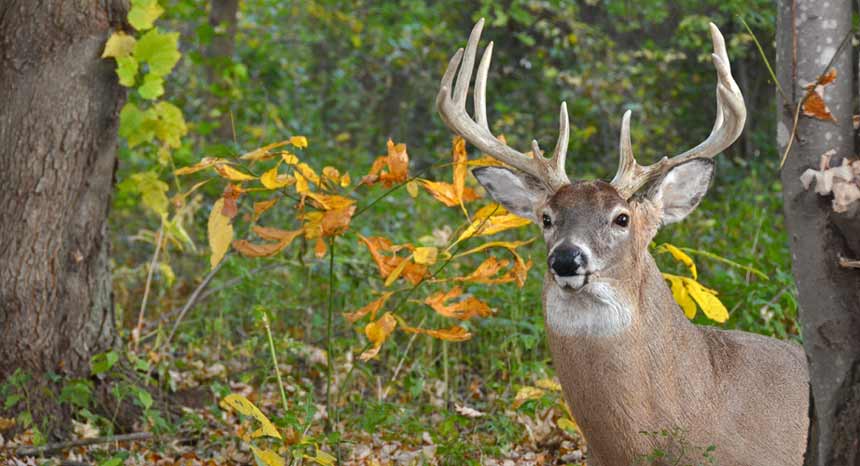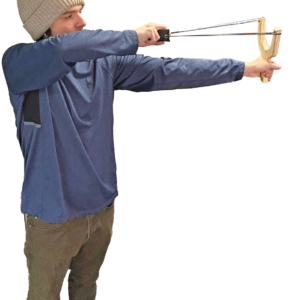
Deer Hunting Season – Be Prepared!
For hardcore whitetail addicts like myself, hunting is a 365-days-a-year labor of love. For normal people, it consumes much less time. No matter the level of involvement, hunting season does require a bit of effort before, during and after. Here’s what I recommend as the bare minimum for time-strapped hunters or beginners looking to get involved in the sport.
In the summer months before the season starts, or sooner even, there are a few necessities that need to be done. First and foremost, I make sure I have a place to hunt. Nobody likes to grant permission to a camo-clad hunter opening morning of hunting season. Usually I know well in advance where I’ll be hunting come fall. I always make sure to earn my hunting rights by cutting wood, mending fences, feeding animals, bailing hay or, mowing lawns. When push comes to shove, landowners are less apt to refuse a hunter who helps around the farm. Other ways to look for hunting land are through online leasing agents and Craigslist. I have much more time than money so I don’t lease but rather work for my hunting permission.
Also, another non-negotiable task is to make sure the weapons are shooting with precision. I love to shoot and do so regularly throughout the summer for fun and relaxation. I also make sure to sight in my shotgun and muzzleloader well before their seasons begin.
I like to hang tree stands and build ground blinds during the summer months too, but this is not an absolute necessity- just a bit of planning ahead when I have time.
During the hunting season it’s important to be in the woods! I hunt as often as possible and don’t turn down chances at an animal. Yes, I am a trophy buck hunter but I rarely pass on a doe. Make sure to have enough legal kill tags on hand so if a mature doe walks by, the family freezer will be a bit fuller in a few days. That’s another thing- empty the freezer! We eat as much as possible before hunting season comes along so that I’ll have room to put fresh venison in come fall.
Try to stay as scent-free as possible while hunting. I wear state of the art technical scent control clothing which helps tremendously. At a bare minimum, wash all clothes in baking soda and store outside in airtight containers. Some hunters like to store their clothing with natural-smelling items such as pine boughs and dead leaves for a more earthen odor.
When hunting, think like a deer. Consider where a deer would be during shooting hours, such as a well-traveled trail or a popular food source. As for preferred foods, nothing trumps acorns and when they are falling each year, every deer in the county will be nearby stocking up on the precious calories before winter. When the deer are breeding, during the “rut,” which is usually the first weeks of November, all logical bets are off! The only certain thing is that we hunters need to be in the woods.
When a shot presents itself, breathe slowly and make it count. I always tell myself the animal has no idea I’m here and that usually helps me to stay calm and not rush the shot. Aim for the vital organs, behind the front shoulder and don’t take risky shots. No matter what happens, I always wait at least a half hour before taking up the track. Of course, when in doubt, back out. It’s usually cold enough to let a deer lay overnight if the shot placement is uncertain.
After a deer is harvested, it’s really important to properly care for the meat. Depending on the location and time of the kill, I try to drive the entire carcass home to process. Some people field dress the animals, and that’s great, but I usually hunt near home where I can get them to a garden hose. Either way- it is important to remove the internal organs.
Many hunters choose to have a professional butcher their deer, but not me. I try to be as self-reliant as possible so when I do kill a deer, the work usually is just beginning. I’ll take it home, gut it and let it hang for few days depending on the weather. Then, when it’s time to process and I have a bit of help we get to work! Usually my dad, kids and I will make a social event of butchering. Someone brings a few cold beverages, we turn on the football game on the radio, and make lasting memories. We skin the animal and get to work by quartering out the bigger portions such as the legs. Each family is different, so I recommend getting online and watching You Tube videos of people butchering deer to learn your preference.
Once the meat is cut, we grind, steak, cube and whatever else we want before packaging. My family prefers ground, steaks, roasts and cubes for canning. I vacuum seal everything except what we can fit in Mason jars.
There’s so much more that goes into deer season, but at least stick to these steadfast guidelines this fall. Be safe, shoot straight, and go harvest some organic red meat for your family!
Jason Herbert has been published in most major outdoor magazines, speaks at events throughout the Great Lakes region, and works as a marketing consultant in the outdoor industry as well.



